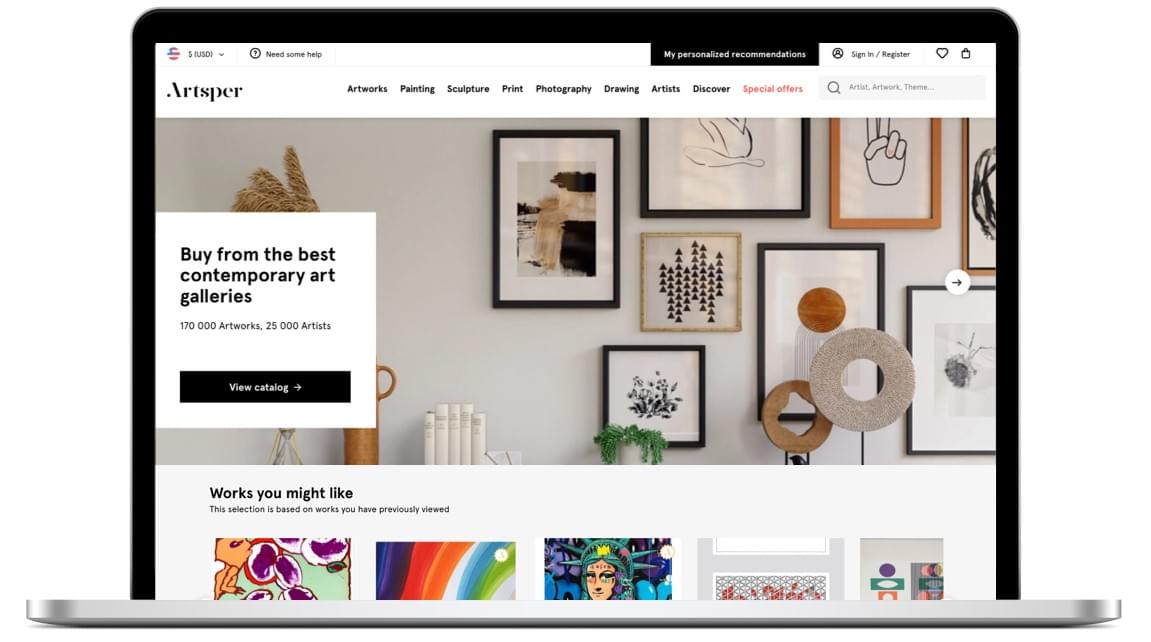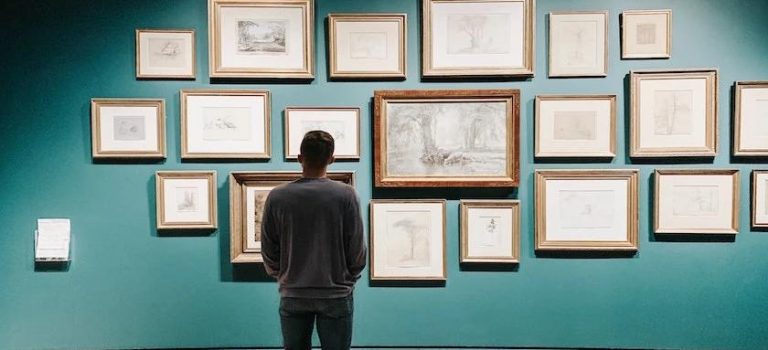Source: Artsper for Galleries.
Art collectors are a major player in the collective functionality and prosperity of the global art market. They hold purchasing power that affects the industry as a whole, inspiring the latest buying trends. Ultimately, impacting galleries all around the world. But who are the current art collectors of the art market in 2022?
Not even Covid-19 can stop art collectors from collecting…
According to Statista, as a result of Covid-19 and worldwide stay-at-home mandates, the art market’s value took a massive hit in 2020, resulting in an approximate value of $50 billion, $14 billion less than the year before. Fortunately, the art world turned things around in 2021, resulting in macro growth, exceeding the expectations of major players all around the world. Although variants spread throughout the globe, the impact was dramatically less severe than the initial crisis in 2020. Even throughout years of restrictions, changing travel protocols, postponed or canceled events, art collectors did not stop collecting. In fact, it only made their trust in online galleries and marketplaces expand.
Who are the art collectors of 2022?

In order to further understand the purchasing trends of art collectors all around the world, an international survey was conducted by Arts Economics and UBS Investor Watch. According to the survey, art collecting is dominated by younger generations. Of the pooled respondents, 52% were Millennials (born between 1981 and 1996) and 35% were Gen X collectors (born between 1965 and 1980), as these generations currently are the most active collectors in the art market. Baby Boomers (born between 1946 and 1964) and Gen Z (born between 1997 and 2012) made up 12% of the surveyed respondents, but it is important to note that Gen Z collectors are rapidly growing in terms of impact and dominance within the art market. The results of the conducted survey reveal the pursuits and trends of younger collectors. Not only are younger generations the future of every industry, but they are also impacting the current art market.
Generation Z: the future dominant player in the art market

Art Paris, an Artsper Partner, 2021, © Marc Domage and Art Paris
Although Gen Z only makes up a small percentage of art collectors, their passion for art is strong and continues to grow. In terms of all generations of art collectors, Gen Z spends the highest average of total earnings and overall wealth on art. A third of Gen Z collectors spend 30% of their earnings on art investments, higher than their generational peers: Millennials (27%) and Gen X (24%). This desire to spend more money on art collections underlines a significant role that art plays in the lives of Gen Z individuals, most importantly, collectors. It also highlights the current and future importance Gen Z collectors will have on the art market as their collections continue to grow, over the coming years and decades.
Big names remain a popular choice

At auction, © Sotheby’s
Arts Economics and UBS Investor Watch confirm a proportionate array of artists amongst the collections of art collectors all around the world. Collectors are interested in a variety of artists. When analyzing collections, on average 53% of works were created by living artists and 47% by deceased artists. The 6 percent difference shows that across the board collectors are slightly more interested in collecting artworks by living artists. This also points to a continuation of a growing trend, seen steadily over the past few years: emerging artists.
The average art collection can be broken down into four categories: new artists, emerging or developing artists, mid-career artists, and established or top-tier artists. An average of 23% of works owned by collectors are by new artists, 22% of works are by emerging artists, 25% of works are by mid-career artists, and 30% of works are by established artists. When breaking down collections by generation, the percentages begin to change.
It is reported that Gen X collectors, out of all generations of collectors, are most interested in buying artworks by top-tier and established artists. As a result, 32% of the works in their collections are by well-known names. Newer collectors are most infatuated by the work of new artists which is reflected in their collections. Because of this, on average 39% of the works within their collections are by new artists. However, even new collectors are fascinated by big names, with an average of 24% of collected works by established artists.
Expansive mediums and digital art…

High Networth Indivudal Collector Average Expenditure on Digital Art in 2021, © Arts Economics (2022)
Collectors are not stunted by a single type of artistic material. As a result, collections are diversified in terms of the range of mediums. On average, nearly 47% of works in collections in 2021 were “traditional” art mediums, such as paintings, sculptures, and fine art drawings. This was followed by only 19% of works in collections being made up of prints and photographs. This brings us to the boom of digital art and the rising prominence of NFTs, making up 10% of collections in 2021.
When analyzing average collections by generation, digital artworks made up 12% of collections for Gen Z collectors and only 7% of collections for Boomers. In terms of digital art alone, 56% of collectors intend to buy digital art in 2022. Amongst interested collectors, a majority (61%) are Millennials. As the demand and popularity for digital works and NFTs continue to grow, so will its presence in collections. Across the board, 76% of collectors invested in NFTs in 2021, and there are no signs that this interest will cease to exist over the coming months. 88% of collectors admitted keen interest in purchasing NFTs works in 2022. In fact, the intrigue will only continue to expand as more galleries and auctions sell digital creations, making works accessible to collectors who are uninterested in exploring purely NFT online marketplaces.
Growing trust for online channels

The Artsper platform, 1,800 partner galleries, making art accessible to collectors online
As seen by the unprecedented growth in the art market of 2021, following the setbacks of 2020, there is a growing interest amongst collectors toward online channels. Why you might ask? 2021 was not quite the same as 2020, and yet, there were plenty of obstacles that forced much of the world to continue to stay home. However, this didn’t prevent collectors from investing in artworks.
In terms of channels for finding and sourcing future, acquired works, there is a myriad of options, but collectors clearly have their preferences. Galleries are a key channel for purchasing and investing in works for collectors. On average, 76% of collectors purchase from a gallery or a dealer in some capacity. In 2021, there was an evident shift towards purchases on online marketplaces, such as Artsper. This change in practice has also encouraged galleries to change their habits, as digitalization can no longer be ignored. In fact, in 2020 alone, more than 400 new partner galleries joined Artsper. As a result, there was a 64% increase in sales. In 2021, 44% of collectors worldwide purchased works remotely. This percentage not only shows a dramatic change in process or mindset, but also highlights a crucial fact: collectors feel increasingly more comfortable purchasing works for their collections online.
This is why it is essential for galleries and artists to strengthen their strategies through the implementation of online content, in order to ensure a strong digital presence. These initiaves will attract collectors, resulting in a steady flow of sales. At Artsper, we are here to ensure your gallery has the best opportunities to develop and expand your online visibility, to reach the collectors of 2022! So, what are you waiting for? Join Artsper now!








